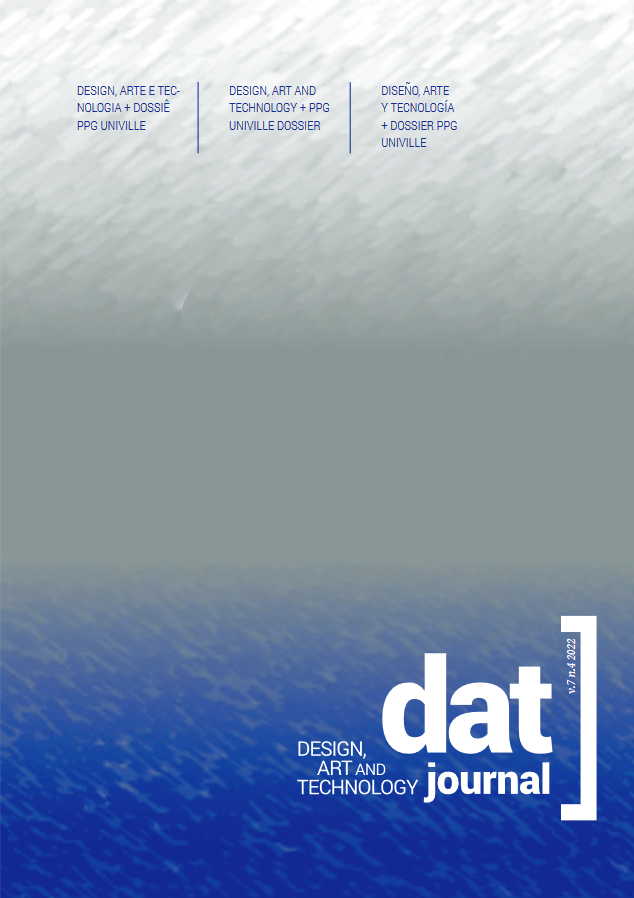3D Printed Clothing Fasteners for Small Fashion Brands
DOI:
https://doi.org/10.29147/datjournal.v7i4.669Keywords:
3D printing, Sustainability in fashion, Custom clothing fasteners, Biodegradable clothing fastenersAbstract
The fashion industry is a very important sector of the world economy. However, it is also responsible for a considerable part of humanity's carbon emissions. With the sector's rapid consumption and disposal cycles, large volumes of solid waste are also generated. As a result, there is a growing number of initiatives to replace textile materials with more sustainable alternatives. In addition, several initiatives addressed the use of 3D printing technologies to generate unique and environmentally appealing pieces. But in addition to textile fibers, clothing fasteners sometimes pose a problem in the reuse or decomposition of products, since they are made with different materials, such as metals, wood, and resins. In this sense, it is possible that 3D printing can also be applied in the manufacture of clothing fasteners. This article aims to present the development, testing and application of some models of clothing fasteners made with 3D printing. The development has an empirical character, with evaluation of the use of fused filament printing in different materials. There was also an evaluation of the items by means of reactive dyeing, dry dyeing, softening and industrial laundry. With the definition of parameters and materials, clothing fasteners were prepared for a local brand. Finally, an evaluation was carried out with micro and small businesswomen in the sector to verify the acceptance of these artifacts. The results indicate that it is possible to produce custom clothing fasteners with some of the materials presented, as well as these products were accepted by the participating companies. It is concluded that the use of this technology can bring economic and environmental benefits to the fashion sector, especially to small companies.
Downloads
References
BROADBENT, Arthur D. Basic Principles of Textile Coloration. Sherbrooke: Society of Dyers and Colourists, 2001. 568 p.
HORNBURG, Laís Estefani. Aviamentos personalizados: utilização da impressão 3d na indústria do vestuário. 2019. 105 f. Relatório Técnico (Mestrado) - Curso de Mestrado Profissional em Design, Universidade da Região de Joinville, Joinville, 2019. Disponível em: https://www.univille.edu.br/account/ppgdesign/VirtualDisk.html/downloadDirect/1761417/Lais_Estefani_Hornburg.pdf. Acesso em: 10 ago. 2022.
IKRAM, MUHAMMAD. Transition toward green economy: Technological Innovation’s role in the fashion industry. Current Opinion in Green and Sustainable Chemistry, v. 37, p. 100657, 1 out. 2022. DOI: https://doi.org/10.1016/j.cogsc.2022.100657
JASMINKA, K.; JOSIPA, Š. 3D print additive technology as a form of textile material substitutein clothing design – interdisciplinary approach in designing corsetsand fashion accessories. Industria Textila, v. 69, n. 03, p. 190–196, 1 jul. 2018. DOI: https://doi.org/10.35530/IT.069.03.1430
LE, Linh-Thy et al. Microfibers in laundry wastewater: Problem and solution. Science of The Total Environment, v. 852, p. 158412, 15 dez. 2022. DOI: https://doi.org/10.1016/j.scitotenv.2022.158412
MARCONI, Marina de Andrade; LAKATOS, Eva Maria. Metodologia científica. 8a. ed. Barueri: Atlas, 2022.
OSGOOD, C. E. The Measurement of meaning. Illinois: University of Illinois Press, 1957.
WGSN. Boletim de Sustentabilidade: março 2022. 2022. Disponível em: https://www.wgsn.com/fashion/article/92862. Acesso em: 11 mar. 2022.
Downloads
Published
How to Cite
Issue
Section
License
Copyright (c) 2022 DAT Journal

This work is licensed under a Creative Commons Attribution 4.0 International License.


























